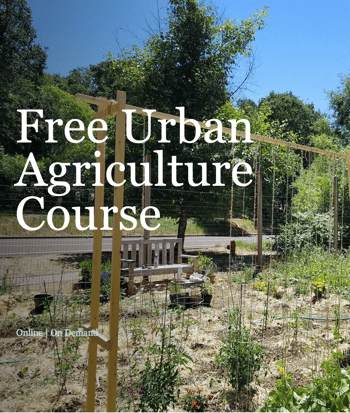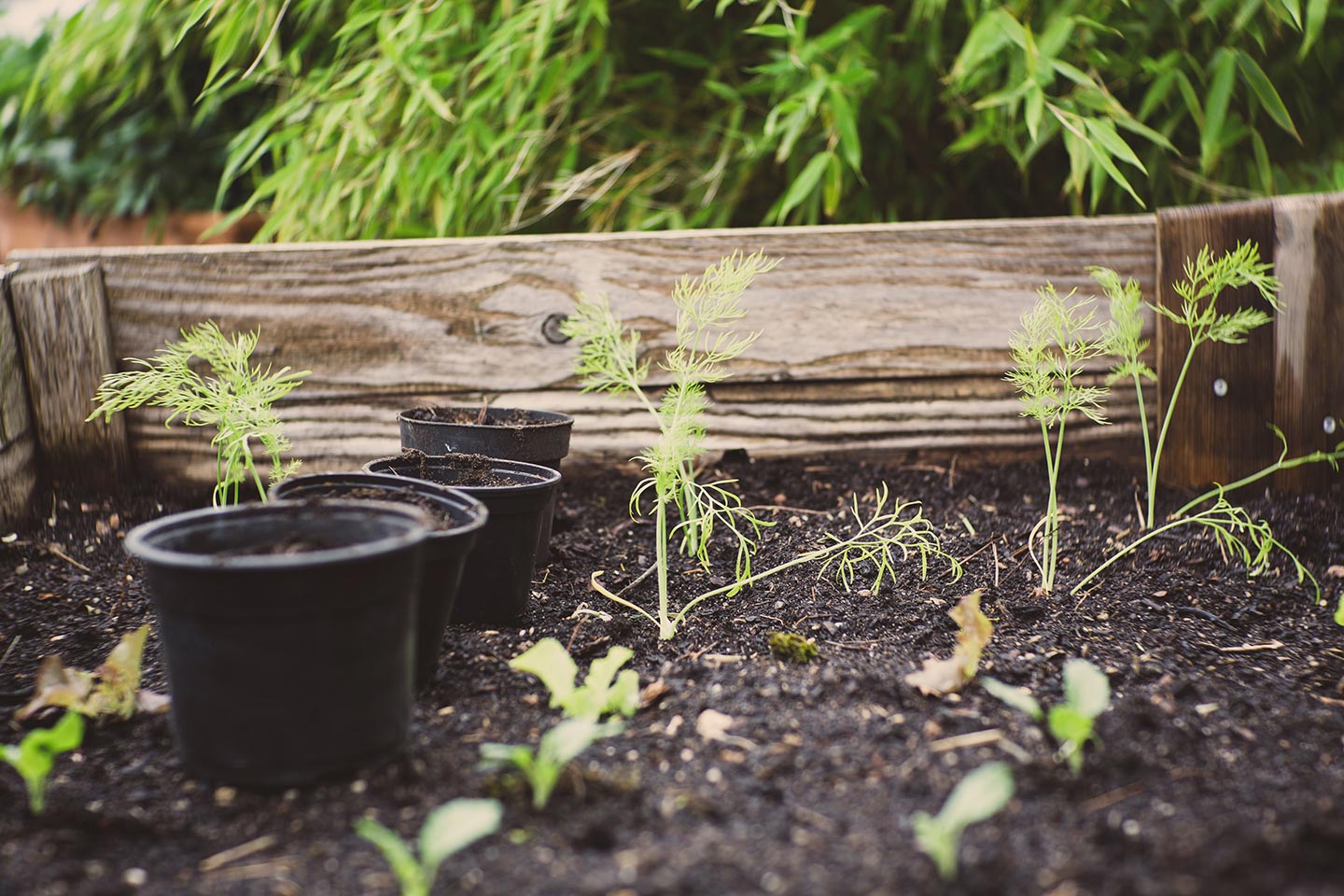Post by Mykl Nelson
Looking for the standard "Five essential tips to…?"
Well, I’ll do you one better! Below are seven urban farming tips, each with their own explicitly actionable starting point!
I hedge my claim here at a soft seven, so that if you don’t like one of the tips I’ve offered, you can disregard it. This way, I’m still delivering the six quality tips I claimed in the title. And if you like all seven — well, then, huzzahs all around!
I made this list from my own experience making money with plants, and upon reflecting on the successful small farms I’ve visited around the United States.
Without further ado, here are at least six — if not seven — tips to help ensure your urban farm is successful!
1. Know your costs
If you don’t know your costs, then you’re going out of business and you just don’t know it yet.
Think about it: You’re not going to accidentally be charging far beyond your costs AND have customers happily paying your prices. You’ll either get lucky and come out relatively even, or, more likely, you’ll be spending more money than you’re bringing in and ultimately losing money on each sale.
Just "knowing your costs" doesn’t do anything for you on its own. But your costs are a central figure to all your financial calculations. Perhaps most importantly, knowing your costs gives you the confidence to adjust your margins as necessary. This gives you a great amount of power on the sales and marketing side of your farm.
Here's a helpful resource from the University of California on how to determine your cost of production.You now have numbers to crunch to see if a wholesale account makes sense.
Similarly, you know how much of a deal you can offer someone — regardless of whether you’re doing the customer a favor or they’re doing you one. This can help you keep your sales consistent even if your profits don’t stay consistent. Consistent sales are usually a good thing when you’re producing a perishable product.
Urban Farm Action Point #1: Start a basic budget for your farm
- Keep all your receipts from farm supplies.
- Record your time spent on all of your common tasks until you routinely finish on the specified time.
- Factor in all your big investments from starting up the farm if you’re already in the midst of production.
You should have a pretty good guess at your typical costs by the end of a full week keeping these notes. Revisit this guess when you finish one cropping cycle.
Review all your numbers after a full year and create a more polished understanding of how much each crop costs you each season.
This can help demystify the value you get from your farm. This kind of knowledge can help you make informed decisions about your farm management.
For example, if you’ve got a crop that’s been a pain — in some manner annoying to grow — and you’re hardly making any money on it, then this should make it easy to justify your need to drop it from your plans and ditch that trouble for a crop that’s less work or fetches a higher price, or both!
Here's a quick visual overview from Information is Beautiful that shows the biggest cash crops.
2. Secure a market before you grow your crop
Trust me, I know this is far easier to say than to do. But if you operate with this tip as your intention — even if you don’t stick to it all the time — you should still reap most of the benefits from this management strategy.
For example, REKO Canada has a nice write-up about a model of exchange sweeping small farms around the globe.
The primary benefit is that this approach keeps you honest. Consider your crop planning, for example. You would never plant a quarter-acre of zucchini if you know you only have a 20-person CSA.
Lastly, this is another tactic to keep you honest about your production potential in that you can’t simply leaf through a seed catalog and pick your favorites — you’ve got to actually grow the cultivar and harvest the crop!
Listening and responding to the demand in your marketplace puts you in a prime position to hear about changing consumer preferences.
If you then work this gleaned information back into your production schedule, then you’re taking great strides towards reducing the waste (or muda — 無駄) of overproduction on your farm. You’ll make more money in two ways here. You should be spending less time growing what doesn’t sell and, conversely, spending more time growing what does sell.
Urban Farm Action Point #2: Show up with samples to your potential customers
You don’t need much, just a small bounty, as proof of your successful system. The goal is to get your physical product in front of people and let them interact with it and imagine themselves using it. You only need to be producing enough for these small samples.
This approach to production helps minimize the risk you take in growing crops that might not sell. It also provides the basic foundation from which you can quickly scale up to meet demand when you find it.
3. Focus on customer-defined value
If you want people to buy what you’re selling, you need to sell what people want to buy. This may sound oversimplified, but the most foundational advice often is.
 Think of Sun Tzu: “He will win who, prepared himself, waits to take the enemy unprepared.”
Think of Sun Tzu: “He will win who, prepared himself, waits to take the enemy unprepared.”
Reading that kinda feels like, "Ok, thanks. Only fight when I can win, got it. Now I’m a top general."
However, the challenge is not in memorizing the lesson but in knowing how to apply it. What this means for urban farming is the challenge to pick and choose the crops that people want and will also pay enough for you to make a living.
The answer to this challenge is not only in choosing the right crop but offering it in the right manner to your market(s).
In general, you can charge more and sell more when your crops are in a highly consumable form.
This typically means eaten fresh or processed on-farm into added-value products. Just think: Fewer people want to buy a whole celeriac plant than those who want to buy just the trimmed bulb, and still more are likely to buy pre-made celeriac hash browns than the raw bulb.
An obvious benefit of selling highly consumable foodstuffs is that you are more likely to gain repeat customers. If they’ve eaten what you’ve grown, enjoyed it, and are now out, then there’s a high chance they’re coming back for more soon.
A significant but hidden benefit to highly consumable produce is that it helps ensure your customers will actually eat and enjoy your product. If they need to put in a lot of work to process a raw vegetable into a meal, then there’s a much higher chance that that vegetable instead just sits on their counter or in their fridge until it’s no longer edible.
Urban Farm Action Point #3: Conduct customer interviews!
Don't just ask customers questions, but learn how to ask them well. There’s an art to asking the right questions in the right manner to get useful answers. Asking people if they’d buy something you’re selling is not a reliable measurement of market demand.
- Learn to invite customer input.
- Aggregate their common requests.
Ultimately, you’re trying to investigate your place in the market. For example, find out people’s opinions not only of your products, but what they see as alternatives and substitutes for what you’re offering.
Without a focus on your customers’ values, you’re likely to end up selling your goods based on price alone, and that’s a losing race to the bottom.
4. Make clear land agreements
None of these tips is written in stone. You should, of course, use your best judgment to find what arrangement is most appropriate for each situation. For example, a handshake might be the best way to gain access to a site, especially early on in your career. However, the best way to prevent losing your land is to have things in writing.
This short video from Urban Farmer Curtis Stone will show you How To Negotiate Land Leases for Urban Farming Plots:
There are real advantages to both parties when everything is spelled out in writing. The benefits to the land-grantor are to be apprised of the full expectations and actions to take place on the site, and potentially to obtain a liability waiver. The advantage to you, the farmer, is to prevent unexpected conflict, and to secure both lengthy access and a guaranteed notice to vacate.
While these contracts aren’t necessarily legally enforceable (lots of local variation), the simple act of covering all the detailed expectations beforehand can prevent a lot of issues.
For example, you can turn down a site if you can’t have unrestricted access to it, or you can know what expectations there are on how the site should look when you do vacate and return management to the owner. This also lets the owner voice any concerns they might have from the beginning, like "will you have a compost pile and will it attract rodents?"
No matter which way you go about securing a place to farm, make sure your access is clearly understood by all parties involved.
If you’re buying, then this is already a formalized process between you, the seller, and the government. If you’re renting or leasing — and especially if you’re making a more informal arrangement — your access to the land might not be so likely to end up written down on paper.
Urban Farm Action Point #4: Create a template to use as your land access agreement for all sites
Maintaining and updating a template will help you concentrate all of your important details in one form. You can put all your standard declarations of intent on there, and you can slowly add special clauses as you encounter them.
In this manner, your template improves and reflects the lessons you’ve learned along your career.
Include things like:
- Expected tenure (3+ years, preferably).
- Notice and terms to vacate or dissolve. (Will they let you finish the season?)
- Who pays for the water.
- How you’ll leave the site.
- Who’s responsible for what level of security.
Be clear that you need unrestricted access to this site. While it’s likely you’ll only be there during normal working hours, you can’t be hobbled by an emergency or overtime situation and remain locked out of your farm.
5. Move beyond trying to own this land
Make your money now, buy your land later. I’m sorry, but that’s where we are.
Unless you’re some special case where you can farm something you already own — hooray for you! — then we need to make plans to farm on land we don’t own. Here's a nice article on Farming Land You Don’t Own.
What is the best approach to fertility management when you don’t know if you’ll be around to reap the rewards of improving your site?
It is a difficult balancing act, to operate a productive farm on land you don’t want to invest too heavily to improve. How should you manage your fertility and labor investment, all while knowing you might need to abandon the site? I wonder if we could try to manage nutrients like jungle soils: Keep the fertility tied up in the actively growing plants.
Here's a helpful page that shows where and when to plant vegetables.
Urban Farm Action Point #5: Design a mobile raised bed
I strongly believe there's a booming future in the application of large, mobile grow beds.
Design it however you want. My advice would be to put it on top of a pallet. With the right base to keep the growing medium from falling through, you’ve now got the industry-standard design for easy transport.
Whether you use a hand-truck or a forklift, you can load your beds into any truck and drive off to your new location when necessary.
Beyond this, the actual building of this bed is going to be a diversified and localized affair — at least until someone puts together a good design and starts pumping out standardized units.
Until then, my two basic approaches use either wood siding and landscape fabric lining, or large bags woven from LDPE. Regardless of the material you choose, just make sure it’s breathable and water permeable.
6. Don’t let perfect be the enemy of progress
If you’re farming, you’ve gotta be making money.
Don’t just do things because you think that’s what you should be doing; the goal is to work effectively. Yes, farming can be fun. Yes, producing food is one of the most wholesome acts you can choose to engage with.
You don’t have to ‘sell out’ or compromise your morals, but to quote Ron Finley: ‘The thing about sustainability is, you gotta sustain it!’
A lot of people apply this rule as the Pareto Principle — 20% of the work yields 80% of the result.
Rather than potentially running yourself ragged and stretching your farm too thin while you chase an ideal of serving CSAs wholly from your own farm, you could reduce your crop diversity and double-down on the crops that perform best for your space and timeframe as well as fetching the highest dollars at your marketplaces.
This might mean you don’t grow tomatoes on your farm, or maybe that you grow a diverse salad mix but no herb bundles. Every situation is different.
But there’s a reason that farmers separate their private garden from their professional farm. The farm is a place for efficiency, and decisions are driven by customers. The garden is a place for enjoyment, and the decisions are wholly left to those who work the site.
Urban Farm Action Point #6: Find a time to reflect on what you’re looking for in your farm
Be discerning about what brings value to your farm and what does not.
Always ask yourself if your actions are creating value for your customers and how you can best capture that value. For example, your rows only need to be as straight as it takes to speed cultivation and harvest.
7. You deserve days of rest, and you deserve a living
Some of us are lucky enough to work in a profession we greatly enjoy. But this brings the dangerous temptation of overworking ourselves and explaining away our exertion because we "just love it so much."
Enjoying one’s work is well and good. But we need to be careful to make sure we can continue doing this beloved work for a long while. We should seek to protect our minds from burnout, to protect our bodies from strain.
Urban Farm Action Point #7: Pay yourself first.
This means you pay yourself at the beginning of each month rather than taking whatever’s leftover at the end of the month or year.
You might notice this puts pressure on your farming system: That’s the point. This pressure forces the business to organize to provide a living for yourself and your family. It’s a tactic to force problems and issues into the light of your examination.
If your farm can’t afford to pay your salary and keep itself operational, then you know it’s time to reassess the crops grown, or their quantities, or the prices you charge.
Something has got to change, because the farm’s not functioning properly if it’s not paying the farmer.
If you would like to learn more about urban agriculture ....
 If you would like to learn more about urban agriculture and city gardening, you can get started with the on-demand FREE Introduction to Urban Agriculture course from Oregon State University.
If you would like to learn more about urban agriculture and city gardening, you can get started with the on-demand FREE Introduction to Urban Agriculture course from Oregon State University.
The course is designed to give you the fundamental concepts that can help you get started on this exciting journey.
We also offer a full Online Urban Agriculture program.
If you've ever wanted to turn a gardening hobby into a successful small business — or if you simply want the freshest fruits and vegetables — then this urban agriculture course series is for you!






